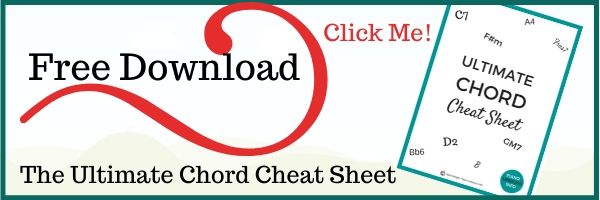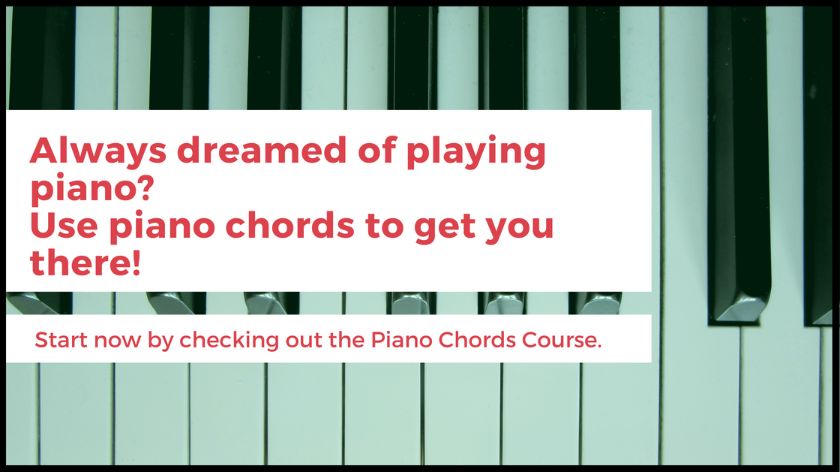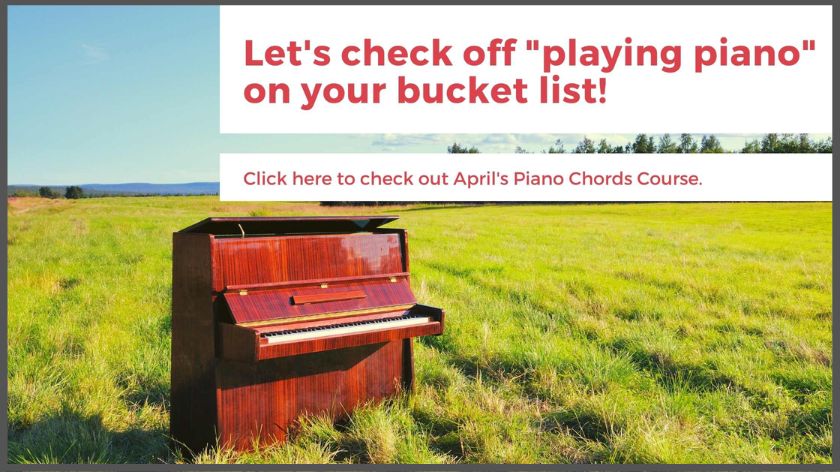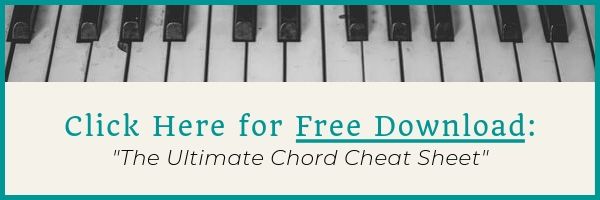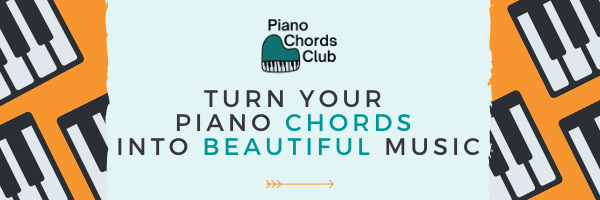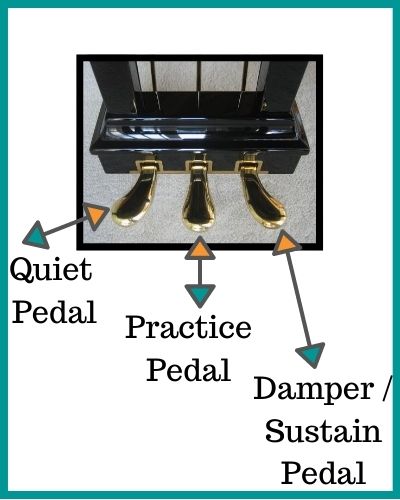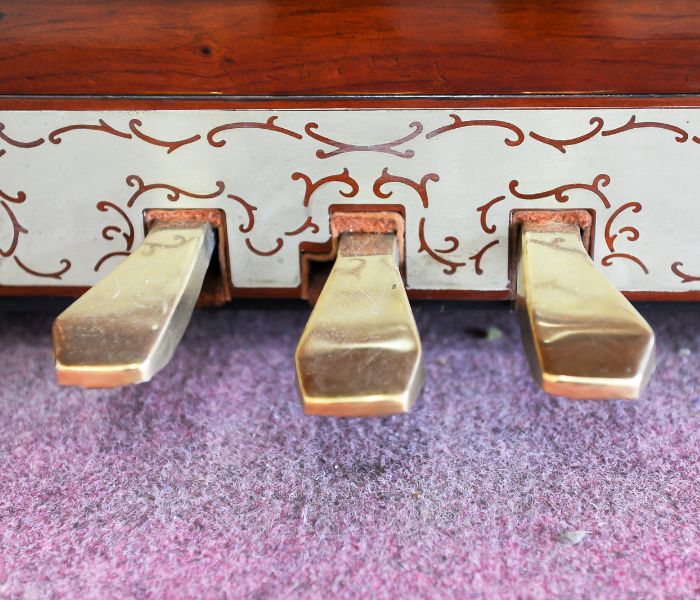How To Use Piano Pedals (Sustain / Damper & Quiet Pedals)
When you start getting past the first initial stages of learning piano, it's time to learn how to use the piano pedals. It's not something you need to learn immediately, like when you learn the piano keys, but once you feel okay coordinating your two hands. (You are adding a third limb in here.)
There are 2 pedals you can use:
1. Quiet pedal (left side on a piano)
2. Damper or Sustain pedal (right side)
We'll go into both. And if you want to take a look at how many pedals there are and piano vs keyboard pedals first, click here.
Video: How To Use Piano Pedals Tutorial
How To Use the Damper or Sustain Pedal
The damper pedal or the sustain pedal is the pedal we're usually talking about when wondering how to use the piano pedals.
This is the pedal that holds onto the notes even after you've stopped playing it.
So it's quite important because it joins notes and lets them ring longer than they're being playing.
But ... this can also cause problems because it lets notes continue on after you've stopped playing them - and they might not go together very well.
So it's important to get the hang of this pedal.
How To Use the Sustain Pedal in Written Music
When you are first learning piano or playing classical music, you may see pedal markings that look like this:
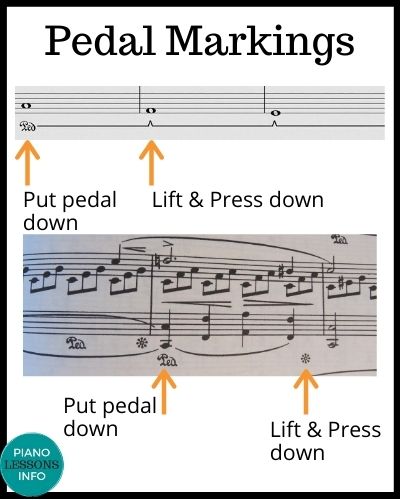
Basically, you put the pedal down when it says to, then quickly raise and lower the pedal where indicated.
These markings aren't always shown but when they are, you can follow them to know when to raise and lower the pedal. After you get to know how to use the pedal, you'll know when to raise and lower the pedal.
How To Use the Sustain Pedal with Chords
Playing the sustain pedal (or damper pedal) with chords is a bit different. You'll need to listen to what you're playing a bit more.
How you can generally think of it is, keep the pedal down while playing a specific chord. When you play the next one, you want to lift and press down again.
Step by step (how to use the pedal):
- Play the notes of a chord and press down pedal at the same time.
- Continue playing that chord with the pedal down as long as it sounds fine.
- Play the next chord.
- Quickly lift and press down the pedal (while holding onto the notes of the next chord).
- Repeat.
What About With A Piano Keyboard?
If you have a piano keyboard and don't have a pedal, you definitely need one.
This is the pedal I recommend on Amazon. It'll work for pretty well every keyboard and it's not flimsy (and you don't want a flimsy pedal). This is an affiliate link which will help support this site (at no cost to you).
Your keyboard should have a jack, usually on the back, that says, "pedal" or "damper" or "sustain". You can just grab a pedal and plug it in. It'll work the same as a pedal on an upright piano. The main issue with these is their tendency to slide away from you.
Things To Listen Out For:
There are a few issues that crop up with using this pedal that you'll need to watch out or listen out for.
1. The music starts to sound blurry.
This means you're holding onto the pedal for to long. Just change it (lift and put back down), more often. Especially if you have lots of melody notes.
2. Not lifting the pedal high enough.
If you don't lift the pedal all the way up, it'll still hold onto notes making the music sound blurry or muddy. Make sure you go completely up and then back down.
3. Not keeping your heel down.
Your heel should be down, and stay down, while you're using the pedal. This is part of your correct piano posture.
4. Breaks in the music.
If you're using the pedal but it doesn't sound like everything is joined or there are breaks in the music, you're probably lifting it too early. Hold onto the pedal until you've played the next notes you need to play and then raise and lower it.
The other issue here is that you could not be pressing it all the way down. And if you're not, that's how to fix it, by pressing it all the way down.
5. Sounds like there are too many notes.
If you find that it's starting to sound like there are too many notes, you just need to change the pedal more often.
Pieces of music that have more notes will need more changes while simple slow songs won't need it as often.
6. There are lots of melody notes.
When there are lots of melody notes, even if you're still playing one specific chord, you'll need to change (raise and lower) the pedal more often. Just do that whenever it sounds like it or when you start a new phrase in your melody.
How To Use The Quiet Pedal
A quiet pedal, the one on the left, helps you to get really quiet on the piano.
You want to use this when you see a dynamic marking like, "pp" (pianissimo) or "ppp".
When your fingers can't make something go quiet enough, it's time at add in the quiet pedal.
How you use a quiet pedal is you press it down when you need to get quiet and hold it. Lift it again once you don't require to be that quiet anymore.
What About With A Piano Keyboard?
On a keyboard, you'll have a volume dial which makes things a bit harder. You can't really get the range of dynamics on a keyboard like you can on a real upright or grand piano.
My Yamaha digital piano does have a quiet pedal but I use it rarely.
If you will be performing a piece of music on a "real" piano though and will need to use a quiet pedal, it's a good idea to practice with it.
Basically, if you don't have a quiet pedal for your keyboard, I wouldn't worry about it too much unless you need to practice performing for others.
If you have a piece of music you're playing on a keyboard that has dynamic markings on it that would require a quiet pedal (but don't have one), just set your volume dial in the middle (or whatever seems right for your keyboard) and then play as softly as you can. One of the problems is you won't be able to go as loud as you want to on the other end. Just do what works for you in your situation.
Now, all that being said, it is possible to get a quiet pedal for some keyboards but you'd need to check the back and make sure it has the capability. And then you could get a pedal to plug into that jack.
And now ... Time to Practice!
You have learned all you really need to now about how to use piano pedals. You can now try it out and start practicing.
If you haven't used the pedal much, start with something pretty simple. Even a basic chord progression like C, F, am, G. You'll get the hang of it.
Recent Articles
-
Piano Notes Chart
Nov 20, 23 10:21 PM
Find a piano notes chart for treble clef and bass clef notes as well as the different types of notes. -
D Chord on Piano + Diagram, How To & Theory
Oct 24, 23 12:20 AM
Learn how to play the D chord on piano with diagram, fingering, D/A, D/F# and a theory explainer. -
Diminished Piano Chords: Chart & How to Make Them
Oct 09, 23 09:23 PM
Learn the different diminished piano chords and how to make them. Here you'll find both a diminished chord chart and an explanation.
Free Download:
Ultimate Chord Cheat Sheet
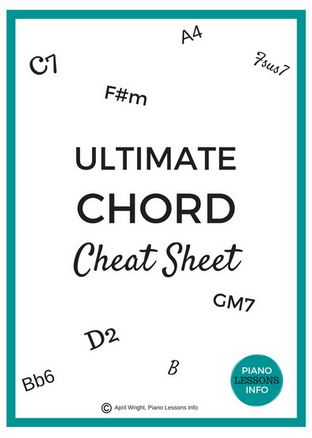
Subscribe below and get free access to the (printable) Ultimate Chord Cheat Sheet.
- Home
- Pedal
